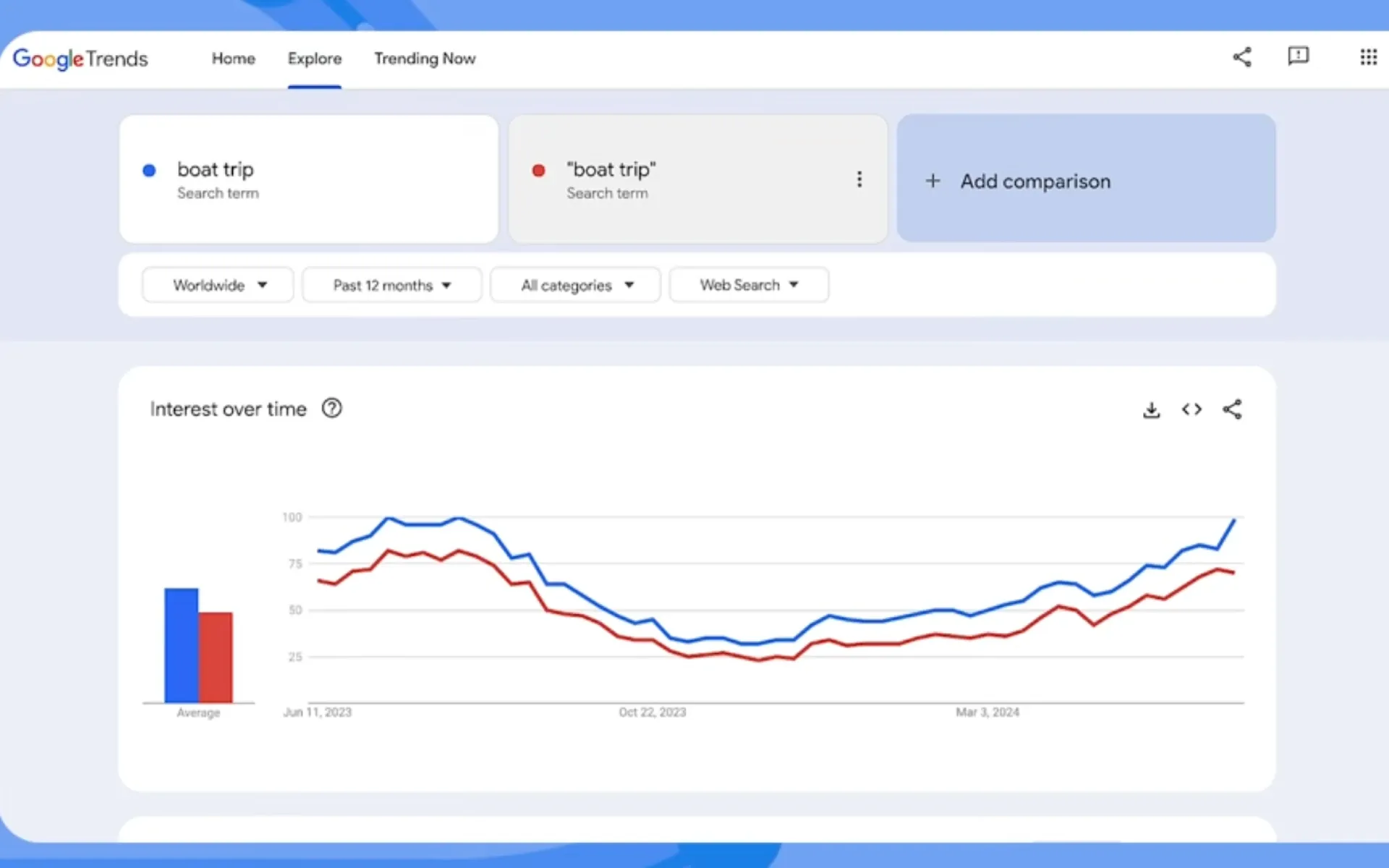Google Trends unveils advanced features for enhanced data analysis
Google Trends introduces advanced search capabilities and comparison tools, empowering users with deeper insights into search data.

Google Trends, a popular tool for analyzing search interest over time, has introduced a set of advanced features aimed at enhancing user experience and data analysis capabilities. On August 28, 2024, Google Search Central released a video tutorial detailing these new functionalities, which include advanced search techniques using punctuation and detailed comparison filters.
Daniel Waisberg, Search Advocate at Google, and Omri Weisman, Google Trends Engineering Manager, presented the new features in the latest episode of the Google Trends tutorial series. The video, which runs for approximately 7 minutes and 30 seconds, provides an in-depth look at how users can leverage these advanced tools to extract more precise and meaningful data from Google Trends.
One of the key features highlighted in the tutorial is the use of punctuation for advanced searches. According to Weisman, users can now employ special characters to refine their search queries and obtain more accurate results. For instance, using quotation marks around a phrase like "boat trip" will return results for that exact term, potentially including words before or after it. The minus operator can be used to exclude certain terms from the search results, while the plus operator allows for broader searches that include multiple terms.
The tutorial also addresses the issue of language-specific searches. While topics in Google Trends are language-agnostic and include misspellings, users interested in specific language data can now use punctuation to narrow their focus. This feature is particularly useful for businesses or researchers looking to analyze trends in specific markets or language regions.
Another significant addition to Google Trends is the advanced comparison mode. This feature allows users to create more meaningful comparisons by applying filters to search terms. For example, a travel agency in the UK interested in the search term "boat trip" can now analyze trends year-over-year, effectively neutralizing seasonal effects and providing a clearer picture of long-term interest.
The advanced comparison mode also facilitates multi-market analysis. Users can compare search interest for a term across up to five different markets simultaneously. This functionality is particularly valuable for businesses considering expansion into new geographical areas or researchers studying cross-cultural trends.
In addition to these analytical tools, Google Trends has improved its data sharing and export capabilities. Users can now easily share their analyses by copying the page URL, which updates dynamically as terms and filters are added or modified. This ensures that collaborators or colleagues can view the exact same data and filters.
For those who wish to incorporate Google Trends data into their websites, the platform now offers an embed feature. Users can generate embeddable cards from almost any data visualization on the page, which will display up-to-date information and may even reproduce some in-product interactions.
Data export functionality has also been enhanced. Users can now export data from each card to a CSV file, allowing for further analysis or visualization in external tools. This feature is particularly useful for data analysts and researchers who require raw data for more complex analyses.
The introduction of these advanced features represents a significant upgrade to Google Trends' capabilities. By providing users with more precise control over their searches and comparisons, Google aims to make the platform more valuable for businesses, researchers, and anyone interested in understanding search behavior trends.
It's worth noting that while these new features offer powerful analytical capabilities, they also require a deeper understanding of search dynamics and data interpretation. Users are encouraged to familiarize themselves with the nuances of these tools to make the most effective use of the platform.
The Google Trends tutorial series continues to be a valuable resource for users looking to master these new features. Future episodes are expected to cover additional topics, including real-time trend analysis.
Key facts
- The tutorial was released on August 28, 2024, by Google Search Central.
- New features include advanced search with punctuation and detailed comparison filters.
- Quotation marks, plus, and minus operators can be used for more precise searches.
- Advanced comparison mode allows for year-over-year trend analysis and multi-market comparisons.
- Users can now share analyses via dynamic URLs and embed Trends data on websites.
- Data export functionality has been improved, allowing CSV exports from individual data cards.
- The tutorial is part of an ongoing series aimed at helping users maximize the utility of Google Trends.

